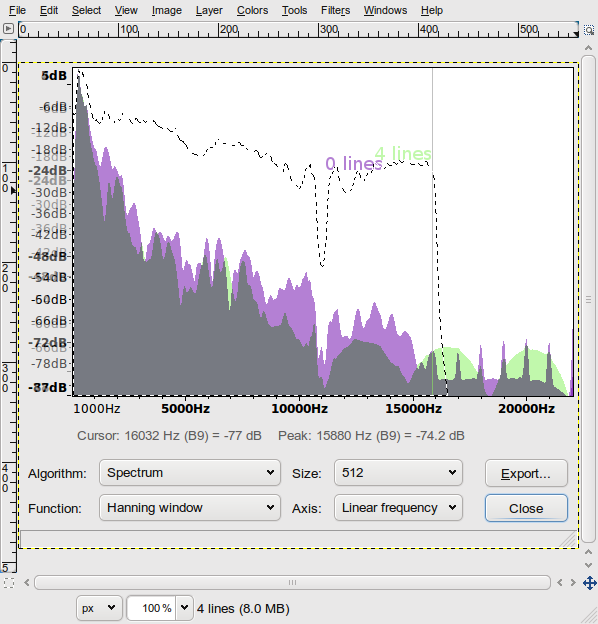|
|
Al Gietzen wrote:
Ernest;
Interesting stuff. Just a guess; but it seems to me that, while 15 db is an
appreciable reduction, having that reduction only over the 8K to 12K maybe
isn't all that productive. It would reduce the 'harshness', but isn't the
greatest amplitude at lower frequency? Also, do you envision that this can
be made into a compact, workable package for aircraft application?
Al, you prompted me to run the same analysis on a different sample. I picked a section of the sound where Mike was revving the engine. The first analysis was from a section where he was idling.
This time, I kept an outline of the original sound in the background. You can see that my experimental setup has a lot to be desired. However, the loss from the original to the light purple peaks is the same loss in all the later samples. The light purple is the straight through, no interference sample. The sample with 4 lines is in light green. Where the green overlaps the purple, we get a dark grey. The purple above the dark grey is the attenuation from adding the 4 lines of baffles. Any green above the grey is energy added. I would be tempted to say that the green peaks at 16.5kHz and 20kHz are artifacts of the experimental setup, except that the artifacts move predictably with the addition of more rows, ie, the arrangement is moving sound energy out of the lower frequencies and out beyond what we find audible.
Now, I'm tempted to find out what will happen if I add more rows.
--
Ernest Christley, President
Ernest@TechnicalTakedown.com
TechnicalTakedown, LLC
www.TechnicalTakedown.com
101 Steep Bank Dr.
Cary, NC 27518
(919) 741-9397

PhononicBandgapAttenuation2.png
|
|